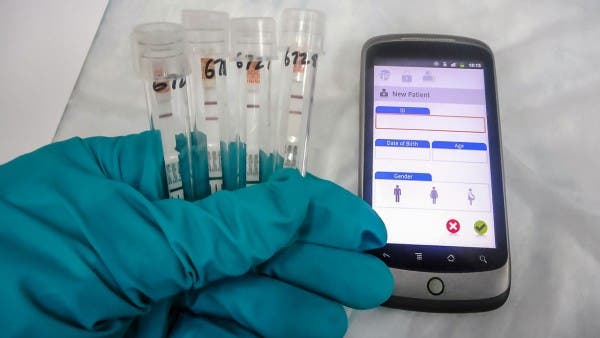A new mobile Ebola test can detect the virus using a single drop of blood and reports a positive or negative result in under 15 minutes. When the ReEBOV test was applied in the field, it identified 100 percent of all infected patients who also got positive results with the lab test. Coupled with other recent advances in the fight against Ebola, like antiviral vaccines, the new test will help prevent another outbreak and hopefully contain the virus for good.

Typically, when a person is suspected of being infected with Ebola, doctors perform a lab-based test called the PCR test. A full vial of blood is drawn from the arm, then placed in a machine that amplifies the genetic material which helps screen for the virus. This process lasts days, costs at least $100 per test, and of course requires a well equipped lab nearby. During this whole time, the potentially infected person needs to be quarantined until test results get back. Ironically, if the patient wasn’t infected until he was quarantined, he might very well be after.
The ReEBOV test developed by Colorado-based Corgenix works fundamentally different. Instead of screening for telltale genetic material, the test detects specific proteins made by the body in response to an Ebola infection. Within a couple of minutes after a couple drops of bloods are placed on a thin piece of paper, a line appears signaling either a positive or negative result. The whole test costs around $15 (now) and can be performed anywhere without expensive lab equipment or critical expertise required. Anyone can perform the test, even the potential infectee.
For two weeks in February, doctors tested 106 patients with suspected Ebola symptoms from Sierra Leone – one of the countries which was the hardest hit by Ebola – using the ReEBOV test and a classic PCR-based test, both in parallel. The ReEBOV test was also performed on 284 previously collected blood samples. Amazingly, the ReEBOV tests flashed positive for every single case in which the PCR-based test diagnosed Ebola. That makes it 100% sensitive. At the same time, it also showed some false positives which currently gives it a specificity of 92%, as reported in the journal The Lancet.
“We were surprised by the performance,” says Nira Pollock, an infectious disease doctor at Boston Children’s Hospital and an author of the new study. “It was more sensitive than I expected for a rapid antigen diagnostic test.”
It may be too soon to say, but I’ll take the fall: this is the cheap, portable and accurate Ebola test the world has been waiting for. Border crossings and hospitals can now use it fast and effectively, potentially saving thousands from the deadly disease that kills 9 out of 10 infectees.
“This test can be done in very austere environments, even off the back of a truck; it doesn’t require electricity or a sophisticated lab or an experienced technician,” points out Robert Garry, a virologist at Tulane University in New Orleans, Louisiana, who helped develop the technology the test is based on but was not involved in the new trial. “We need to be better prepared for the next Ebola outbreak and I think with this test we will be.”
“Having a rapid diagnostic test in the field would enable earlier identification of an Ebola outbreak,” adds Charles Chiu of the University of California, San Francisco, who was not involved in the study.. “And that could prevent further spread, especially in areas which really don’t have the resources to contain an outbreak.”
Previously, ZME Science reported how the Ebola virus binds to a “gateway” protein to infect humans. Without this protein, the virus can’t infect humans and scientists are now working on a potential drug or vaccine that can turn off the protein synthesis and effectively block Ebola infections. In the Guinea forest, trials are always underway to assess whether or not a Japanese antiviral drug made from the blood plasma of survivors can save lives. We’re still not done with Ebola, but it seems we’re winning.


